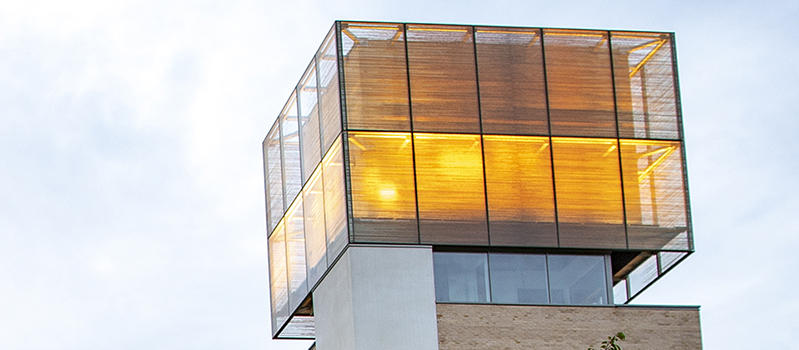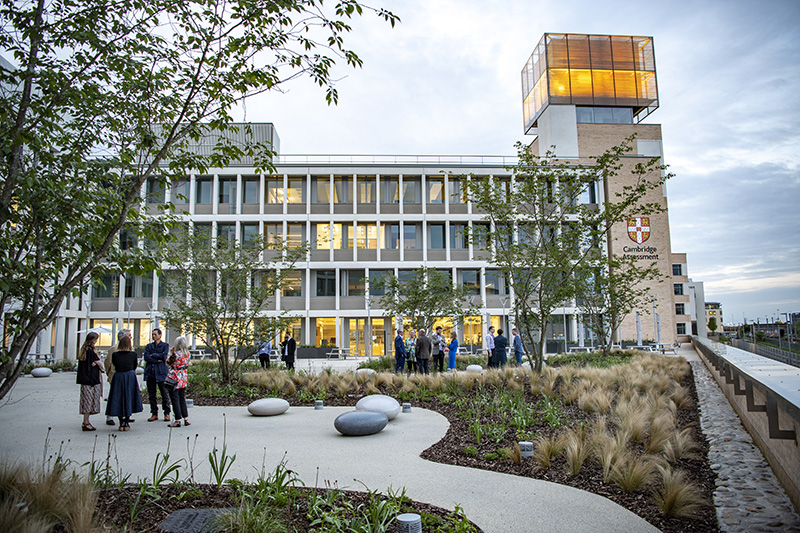03 May 2018

It answers the question ‘What is knowledge?’ in 34 different languages.
Now a stunning public art project which features at the heart of Cambridge Assessment’s new international headquarters has been unveiled.
In Other Words by artists Vong Phaophanit and Claire Oboussier involves a 39-metre-high tower and a 33-metre-long stretch of glass at the entrance to Cambridge Assessment’s new head office in Cambridge, designed by award-winning Eric Parry Architects and built by Bouygues UK. Both are printed with more than 300 ‘answers’ in 34 languages to the question 'What is Knowledge?' The tower itself is softly illuminated like a lantern during the hours of darkness, its pale cream light a parchment colour – designed to show a link with academic practice.

Speaking at the launch, Saul Nassé, Group Chief Executive of Cambridge Assessment, said:
“In Other Words is a wonderful piece of public art that is one of the defining features of Triangle. But a great thing about these works of art is that they aren’t just the works of Vong and Claire. It’s a much bigger collaborative effort than that and collaboration is absolutely key to Cambridge Assessment and how we work.”
Saul paid tribute to all those involved with the project and in particular his predecessor, former Cambridge Assessment Group Chief Executive Simon Lebus, who Saul said was the “moving force behind this fantastic building”.
Simon, who was also at the launch, gave a speech in which he said the theme of the artwork was particularly fitting.
“There’s a particular resonance in asking the question ‘What is Knowledge’ in the context of being an exam board. It’s a question that’s capable of multiple answers.”
“Vong and Claire have created something that is absolutely integral to the fabric of the building and that’s really important – it’s been really instrumental in terms of the presentation and design of the building.”
Artist Claire Oboussier said the project was “right up there with the best we’ve ever worked on”.
“The reason is the people, whether from Cambridge Assessment, or the architects, the public art engagement people, the art consultant, contractors… there was no-one along the way whose heart wasn’t in it, and that you could really sense.
“In this project education, architecture, art and a sense of internationalism came together. They’re all things this country has historically been known and respected for.”
The languages contributed to the artwork included mainstream European languages, some lesser known European languages including Guernsey French and Manx, as well as many Eastern European languages, and others from further afield including Arabic, Filipino, Malay, Swahili, Afrikaans, Bengali, Tibetan, Punjabi and Urdu. Cambridge Assessment asked the question of its stakeholders in over 170 countries.